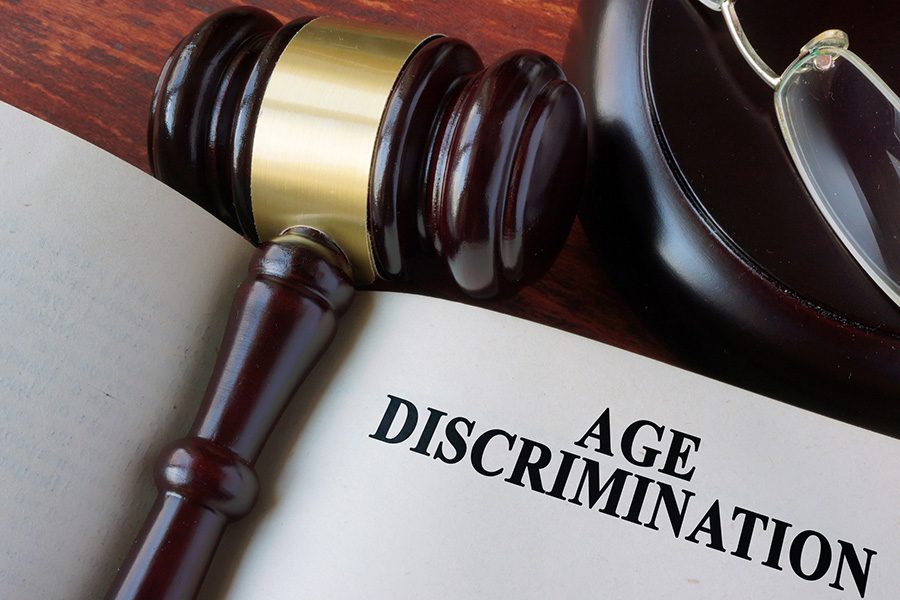Stock image: Mohamed Hassan, Pixabay.com
Court of Appeals reverses, says evidence supports former school employee’s claim
The Minnesota Court of Appeals has reinstated the age discrimination claims of a former St. Paul Public Schools network technician, finding she had presented sufficient evidence of age discrimination to withstand summary judgment.
The court reversed and remanded appellant Barbara Henry’s case to Ramsey County District Court on that claim.
However, the court affirmed summary judgment for the school district on Henry’s age-based, hostile-work-environment claim, finding that evidence to establish an age-based hostile work environment was lacking.
Henry worked for St. Paul Public Schools starting in 1997. She consistently received excellent reviews. But in 2016, formal performance reviews were commenced and resulted in a below-standards rating, followed by another negative review later the same month.
A performance improvement plan (PIP) was initiated for Henry. Four months later, she got another bad review, then another. Henry was threatened with termination and chose retirement at the age of 57 instead.
A fellow employee, in a deposition, described a school work environment in which older workers were targeted so that younger workers could be brought on board to replace them.
Age discrimination litigation was commenced after the Minnesota Human Rights Department dismissed Henry’s claim. She lost at summary judgment at the Ramsey County District Court.
In Henry v. ISD 625, a unanimous Court of Appeals on Monday reversed the lower court in part and affirmed in part, in an opinion written by Judge James Florey. The court also affirmed dismissal of the age-based hostile work environment claim.
The Court of Appeals reinstated part of the case Monday, saying there were genuine issues of material fact and that Henry established a prima facie case of disparate-treatment age discrimination. The court also said that while discharge or constructive discharge establishes an adverse employment action—part of a discrimination claim—the concept is broader than that.
Relying on 8th Circuit caselaw, the court said that an adverse employment action:
“… may also be proved if an employee presents evidence that, when considered cumulatively, could lead a reasonable juror to conclude that she suffered ‘a tangible change in working conditions that produces a material employment disadvantage.’”
Older staff vulnerable to discharge
When discovery commenced, several of plaintiff’s co-workers or supervisors testified that Henry was “targeted.” One said the deputy chief of the department, Idrissa Davis, told staff to write a PIP in a way that Henry could not pass.
Testimony also showed that older staff were always the ones told to leave or forced to leave the department. One witness testified that Davis said that “problems within the department are because people are too old and that they’re overpaid white people.”
The District Court judge found that Davis was “hostile, abusive and confrontational,” fostering a culture of retaliation and that at least seven employees have alleged they were forced out of their job due to age and high salary. But the lower court found that Henry “failed to show the existence of a fact dispute that would bar the court from ruling on her claim.”
The Court of Appeals disagreed and reinstated the disparate-treatment claim.
A prima facie case
Under the Minnesota Human Rights Act, Minn. Stat. § 363A.08 (2020), a plaintiff may use either of two methods to survive summary judgment on disparate treatment: direct evidence or the McDonnell Douglas Corp. v. Green three-part burden shifting test.
The court analyzed the case under McDonnell Douglas, finding no direct evidence that Davis made his comment about employees being old and overpaid in any decisional process.
The McDonnell Douglas test requires a plaintiff to establish a prima facie case. The burden then shifts to the employer to articulate a nondiscriminatory reason for its actions, and the plaintiff may then prove that the reason cited is pretextual.
The Court of Appeals disagreed with the District Court and determined that Henry did establish a prima facie case and thereby created a presumption that the employer unlawfully discriminated.
Adverse employment action
Some prima facie case elements were undisputed, including that Henry is a member of a protected class and was qualified for her job, Florey wrote. The court then turned to her proof of an adverse employment action and inference of discrimination, which it found persuasive.
Considering the disciplinary history, which included exaggerated performance issues, the comments about “old” people and the unachievable PIP, a reasonable juror could find that the cumulative effect of the school district’s actions caused Henry to suffer an adverse employment action, the court said.
A genuine material fact dispute also existed as to whether Henry was constructively discharged, which arises when a reasonable person would find the employment conditions intolerable. (Constructive discharge is relevant but not necessary, as the court had earlier stated.)
In some hostile-work-environment constructive discharge cases, an employer may avoid liability if the employer exercised reasonable care and the plaintiff did not take advantage of corrective opportunities. But that defense, set forth in the Minnesota Supreme Court case of Frieler v Carlson Mktg. Group in 2008, has not been extended beyond hostile environment cases and the Court of Appeals did not do so.
Inference of discrimination
The fourth element of the prima facie case, an inference of discrimination, may be established in a variety of ways, including evidence of the defendant’s pretext—normally the third step of the McDonnell Douglas analysis.
The court determined that there is a genuine issue of fact as to whether circumstances gave rise to an inference of discrimination. Florey writes:
“The most persuasive evidence in support of an inference of discrimination is Davis’ statement that the problem in the department was the ‘old people.’ The testimony from the technology services employees and supervisors about the retaliatory culture created by Davis and his intent to replace older, higher paid employees with younger, cheaper ones is also relevant.”
Florey explained that the statement about old people is not sufficient in itself to sustain Henry’s claim, but it is relevant evidence when combined with other evidence of age discrimination.
An inference of discrimination claim is based on the totality of the circumstances, including frequency of the conduct, severity, physical threats or a mere offensive utterance, and whether it unreasonably interferes with an employee’s work performance, the court said.
However, the court upheld the dismissal of the hostile environment claim. The evidence did not rise to the level or pervasiveness or severity required, Florey wrote.
Judges Tracy M. Smith and Lucinda E. Jesson joined Florey in the opinion. Attorneys for the litigants couldn’t be reached for comment.




